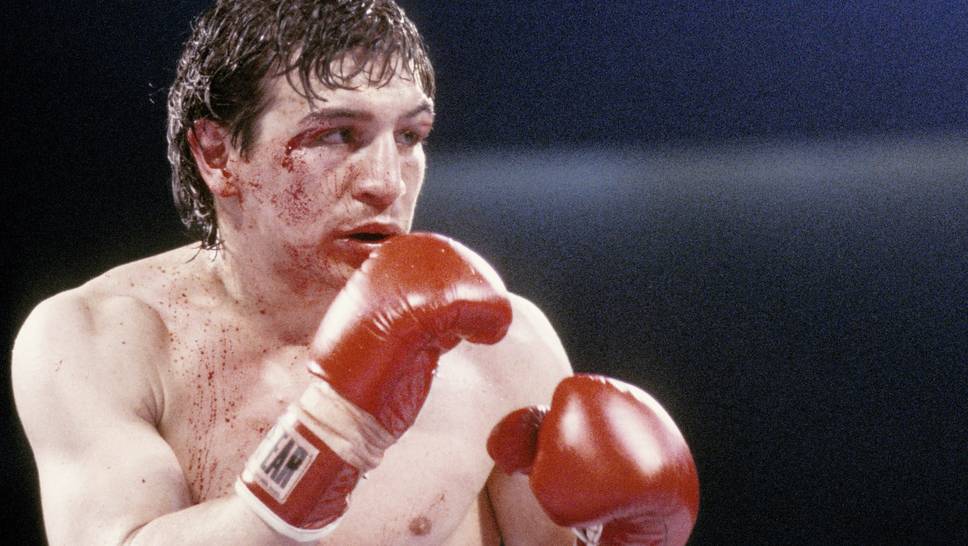42 years ago, a brutal world championship fight against US favorite Ray Mancini ended in the death of Duk-koo Kim and two other tragedies. They changed the sport drastically.
This boxing match was hard to beat in terms of tragedy: On November 13, 1982, Ray “Boom Boom” Mancini defeated Duk-koo Kim of Korea in Las Vegas in the fight for the lightweight world title. Kim died four days after the fight as a result of the fight, the drama resulted in two more tragedies and changed the boxing world forever.
The Korean was not the first boxer to lose his life in the ring. Nevertheless, the way he had gone beyond his personal limits in the fight caused a great deal of discussion in the weeks and months following the fight. He had dueled with Mancini for a full 14 rounds, barely able to put up any resistance in the last few rounds.
Boxers go 14 rounds
The fight between Kim and Ray Mancini, who is extremely popular in the USA, and who defended his WBA belt against the Korean for the second time, developed into a brutal battle from the first round, in which both fighters tried to knock each other out with hard punches, without much defense.
Both fighters threw hard punches, both to the body and to the head of their opponent. The fighters staggered several times after the hard blows. The 10,000 spectators in front of Caesar’s Palace in Las Vegas and the millions of people watching on TV – CBS broadcast the spectacle live on national TV – were gripped by the brutal fight.
Gil Clancy, who was working as a boxing analyst for CBS at the time, sensed something was about to happen in the sixth round: “Something is going to happen in this fight. Either one of the fighters will sustain a cut from a blow or send the other one down very hard.”
And that’s exactly what happened: in the 14th of 15 rounds, it became clear that Kim had never had to box over such a distance. The Korean just staggered around the ring. After a combination of punches, Mancini sent his opponent to the ground with a crashing right. Although Kim tried to pull himself up on the ropes, referee Richard Green ended the fight.
Unaware of the tragic consequences of the fight, the victorious Mancini celebrated his victory, but just a few minutes after the end, the sporting outcome was completely forgotten.
Kim Deuk-Koo, late 1970s and early 80s South Korean lightweight who tragically died following his 1982 title bout against Ray “Boom Boom” Mancini boxing history pic.twitter.com/9a8lOmIwi0
— Boxing History (@BoxingHistory) June 11, 2021
Kim collapses and dies in hospital
Kim collapsed shortly after the fight and had to be carried out of the ring on a stretcher. As Sports Illustrated reported, the Korean was said to have only been breathing four times a minute on the way to the hospital.
Once he arrived at Desert Springs Hospital, Kim was taken directly to the operating room. In a two-and-a-half-hour operation, a blood clot measuring almost 100 cubic centimeters was removed from the right side of his brain. According to the doctors, this clot was caused by one of the hard blows to the head in the fight.
Despite the successful surgery, Kim succumbed to the consequences of the clot four days later. He had previously fallen into a coma from which he never woke up.
Macabre: The Korean had caused a stir before the fight with martial sayings. “Either he dies or I do,” he said to a reporter before the fight. In his hotel room in Las Vegas, shortly before the fight, he wrote on a lamp: “To live or to die”.
The fight leads to further tragedy
If the death of the Korean boxer had not been tragic enough, it led to numerous other tragedies in the months following the fight.
Kim’s mother, who had traveled from South Korea to Las Vegas and was at her son’s side until his death, committed suicide just three months after her son’s death.
Almost seven months after the fight, the next tragedy occurred: referee Richard Green also committed suicide. Green blamed himself for the Korean boxer’s death.
Mancini battled with depression
Kim’s opponent Ray Mancini also blamed himself for his opponent’s death and became depressed. Mancini continued to box and successfully defended his title a few more times, but he was never really successful again after that.
After losing his title in 1984, he fought sporadically until the end of his career in 1992, but according to boxing promoter Bob Arum, he was “never the same again”.
Tragic incident leads to numerous rule changes
The fight also had a significant impact on boxing, leading to numerous rule changes. The Nevada State Athletic Commission introduced the standing “eight-count”. This allowed the judges in the ring to count a knockdown even if the fighter had not actually been knocked down but was about to be. In addition, it was decreed that boxers could not fight again for at least 45 days after a knockout defeat.
But the biggest rule change was introduced by the WBC boxing association: from 1982, the number of rounds in title fights was reduced from a maximum of 15 to a maximum of twelve. The WBA and the IBF followed suit in 1987, and the WBO also started with a maximum of twelve rounds when it was founded in 1988.
Either way, November 13, 1982 became a day from which many boxing fans and observers saw the sport differently. Boxing was never the same again.





